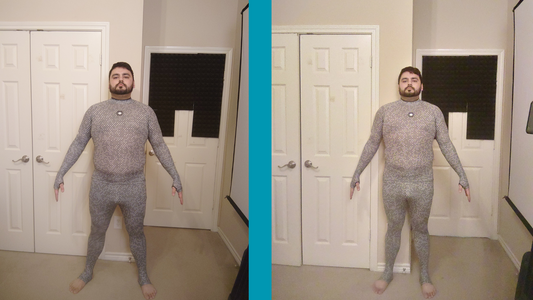

What’s a Good Weight Loss Rate? Find Out Here
Many people who start their weight loss journey have a goal in mind. Maybe they want to lose 20 pounds or they are pursuing a full body transformation to lose 100 pounds of excess body weight, or maybe they have a goal in mind that is in-between.
Regardless of the end goal, there is a safe rate at which to lose weight and reduce your body fat percentage to optimize your health and improve your overall lifestyle. That’s because weight loss doesn’t happen quickly; it takes grit and determination to cross the finish line of your weight loss goal. Losing weight too fast can cause myriad health problems and other issues. If you are losing weight too slowly, then you are likely to be frustrated about not seeing results.
How Much Weight Should I Lose Every Week?
We like to think about weight loss rate in terms of weeks. It’s hard to consider day-to-day changes, mostly because we don’t see that much difference from one day to the next. By looking at data from week-to-week, like when you use the ZOZOFIT app, you can see your progress more readily because the differences in weight will register more prominently.
Typically, most professionals recommend people aim to lose 1-2 pounds per week. While that doesn’t seem like a lot, that is 5-10 pounds per month, which can make a significant difference on how you look and feel. Extrapolating that further, if you were to continue losing weight at that rate for the entire year, you’re looking at losing 60-120 pounds.
Still, weight loss is slow. It’s hard for many people to commit to losing weight because they feel frustrated early on, but just remember that pounds lost add up quickly.
Reducing Body Fat Percentage
If you want to get away from the scale, but are still pursuing a “weight” loss journey, then you may consider paying more attention to body fat percentage. Body fat percentage is a more accurate number of your total health since weight can increase if you gain muscle — even if you look thinner.
When tracking a reduction in body fat percentage, you want to aim for losing 0.5% of body fat per week, which equates to about 2% of your body fat per month. This is a healthy rate and is analogous to losing 1-2 pounds per week.
Unlike weight, if you choose to focus on body fat percentage, it will be best to check your progress every two weeks, which will allow you to lose enough fat for it to make a visible difference for tracking.
How to Track Weight Loss
Tracking weight loss isn’t hard. If you are starting a weight loss journey, do your first weigh-in in the morning before you’ve had breakfast. This will be your base weight. As you progress, you can compare this weight to see how much you’ve lost.
We recommend weighing in every week. Make sure that when you do your weigh-in, it’s under the same conditions as the original: in the morning before you’ve had breakfast.
You will want to follow this same method if you are measuring body fat percentage. Using a tool like ZOZOFIT, which uses 3D body scanning technology to create a 3D rendition of your body, you can measure your baseline body fat percentage. Then, as we said before, scan every two weeks to see how you have progressed in your body fat reduction goals.
Tips for Weight Loss
Now that you know a safe, effective weight loss rate, it’s time to get down to business and start pursuing weight loss.
The two main focus areas for weight loss are diet and exercise. By strategizing in both areas, you will be able to coordinate weight loss that will create long-lasting habits to promote overall health.
Diet
To lose weight, you want to eat fewer calories than you burn. Although this may sound daunting, it doesn’t mean you have to starve yourself. In fact, if you pay attention to your macronutrients — “macros” for short — you can eat so you feel full and satisfied. Focus on reducing the amount of sugar in your diet and increasing whole foods like fresh fruits and vegetables, lean proteins, and whole grains.
You may also consider increasing your protein intake by supplementing with a daily protein shake or bar.
Exercise
Exercise will help you burn more calories and work on your body composition. There are many different types of workouts, so you will want to find what fits best with your interests and lifestyle.
HIIT training is great because it allows you to burn a lot of calories in a short amount of time. The high-intensity interval training gets your heart rate pumping to expend energy. Cardio is also key, as many people turn to running because it burns a lot of calories. There are other cardio options that are also effective at reducing your body fat. Swimming and cycling are great low-impact exercises that still burn a lot of calories, so they’re especially good if you have energy or suffer from any kind of joint pain.
Even just walking is great cardio. Many people live sedentary lives so the simple movement of walking a couple miles throughout the day is sometimes enough of a lifestyle change to decrease body fat. If you work a desk job, consider taking a few walk breaks throughout the day.
For anyone interested in losing weight — or looking like they’re losing weight — weight and resistance training will be your best friend. With this type of exercise, you will build muscle mass and lose fat at the same time. As an added bonus, strength and resistance training often helps sculpt and tone the body so even if the number on the scale doesn’t change, you might find yourself looking thinner or being able to fit into a smaller clothing sizes. And that always feels good!

![zf-w-[168px] zf-h-[40px]](http://zozofit.com/cdn/shop/t/15/assets/logo-desktop.png?v=117713855448369080381753069598)


